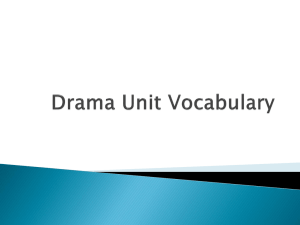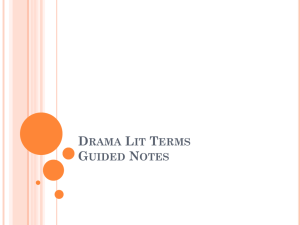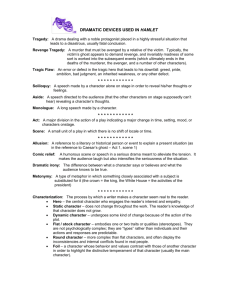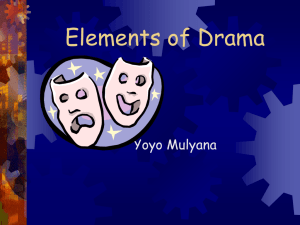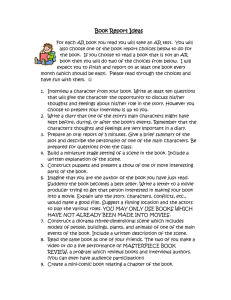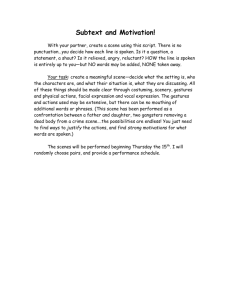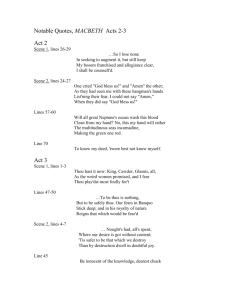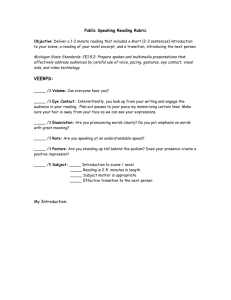ENGLISH 2 SEMESTER EXAM REVIEW LITERARY/DRAMA
advertisement
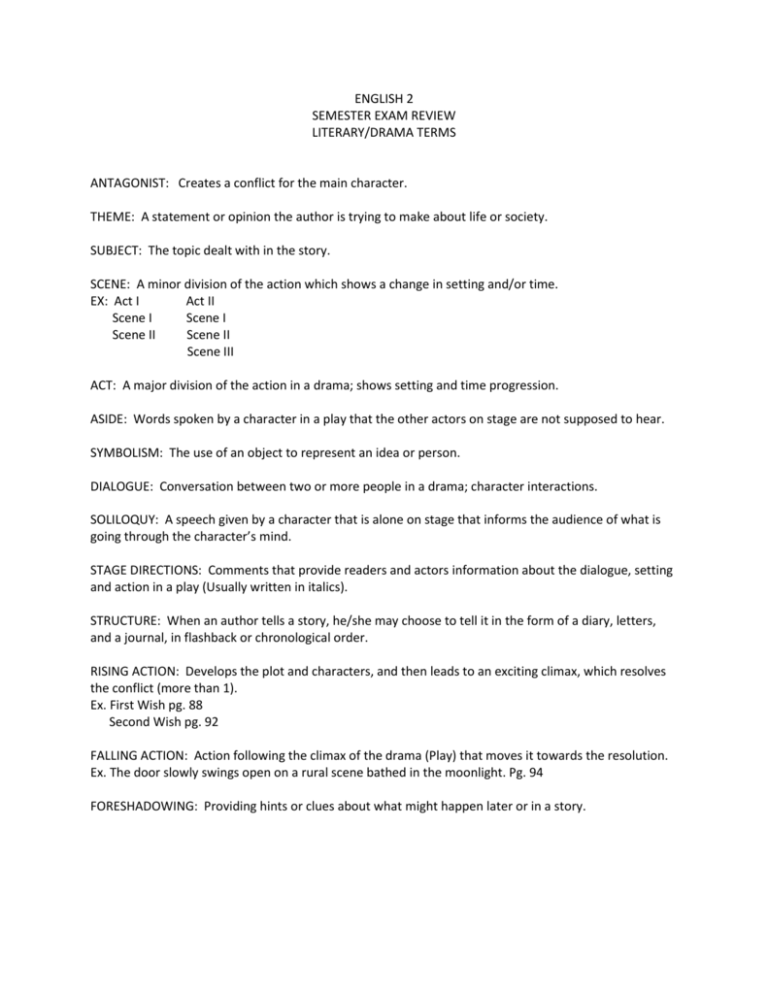
ENGLISH 2 SEMESTER EXAM REVIEW LITERARY/DRAMA TERMS ANTAGONIST: Creates a conflict for the main character. THEME: A statement or opinion the author is trying to make about life or society. SUBJECT: The topic dealt with in the story. SCENE: A minor division of the action which shows a change in setting and/or time. EX: Act I Act II Scene I Scene I Scene II Scene II Scene III ACT: A major division of the action in a drama; shows setting and time progression. ASIDE: Words spoken by a character in a play that the other actors on stage are not supposed to hear. SYMBOLISM: The use of an object to represent an idea or person. DIALOGUE: Conversation between two or more people in a drama; character interactions. SOLILOQUY: A speech given by a character that is alone on stage that informs the audience of what is going through the character’s mind. STAGE DIRECTIONS: Comments that provide readers and actors information about the dialogue, setting and action in a play (Usually written in italics). STRUCTURE: When an author tells a story, he/she may choose to tell it in the form of a diary, letters, and a journal, in flashback or chronological order. RISING ACTION: Develops the plot and characters, and then leads to an exciting climax, which resolves the conflict (more than 1). Ex. First Wish pg. 88 Second Wish pg. 92 FALLING ACTION: Action following the climax of the drama (Play) that moves it towards the resolution. Ex. The door slowly swings open on a rural scene bathed in the moonlight. Pg. 94 FORESHADOWING: Providing hints or clues about what might happen later or in a story.
